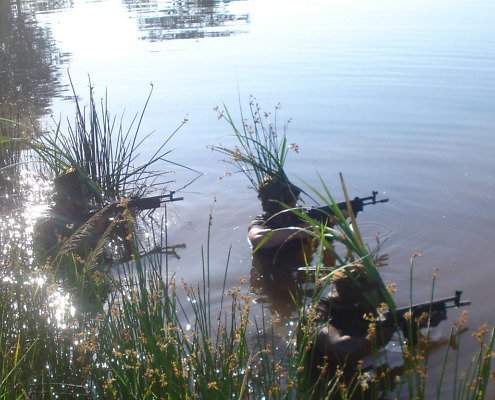 Anti-poaching training special forces training
Anti-poaching training special forces training
The anti-poaching course at Milites Dei Academy follows a special forces training approach by skilling students not only with an accredited firearm and security qualifications but also with combat training, dealing with animal behaviour, intense tracking exercises, gunshot approach, and much more as part of military training style. These trainees stay for days in the bush while tracking and doing surveillance exercises to gather intelligence. They practice bushcraft and survival skills. These students are also remarkably fit and practise the discipline of the drill.
Once completed they celebrate with a green beret at a step out ceremony because Milites Dei Academy is very proud of these guys and girls once they finish the course. They are then ready to join the special forces battle against poaching.
The careers our students specialize in or as:
- Combat Trackers
- Reaction Forces
- Anti-Poaching Units at Lodges, Game Farms, Game Reserves and Commercial Game Farms
- General Security Industry
The Course is registered with PSIRA Reg. No. 2758028
Training Centre no: T1564
SASSETA Reg. No. 171999692736
The course includes the following:
3 X PSiRA Grades E, D and C (including books, exams and certificates). In cases where you already obtained the some or all of the included PSIRA grades, you will alternatively top-up with any other PSIRA grades.
5 Weapons Competencies (2 Gun Types) Personal and Business and Law (books, practical, exams, certificates)
Anti-Poaching Skills x 9
Uniform and military gear on loan
CV and Portfolio
Work Experience and Active Assistance to Find Employment
WWF refers to the term “ranger” as “…any professional involved in the protection and management of national parks and natural areas.” [Read more on http://tigers.panda.org/news/what-is-a-ranger/]
If one considers the extended problem of poaching in South Africa, one realizes that there is a desperate need for special forces training in this industry.
Save The Rhino writes:
“South Africa holds nearly 80% of the world’s rhinos and has been the country hit hardest by poaching criminals, with more than 1,000 rhinos killed each year between 2013 and 2017… At 594 recorded poaching incidents in South Africa in 2019, poaching numbers have declined significantly in recent years, but are still too high. What does this decline mean for rhinos’ future? In February 2020 the South African Department of Environment, Forestry and Fisheries, released the 2019 poaching numbers. Thankfully, the numbers show a decrease of 175 compared to the previous year (769 rhinos were poached in 2017). Unfortunately, this positive – and very welcome – decrease does not mean rhinos are now thriving.
On average in the country, a rhino is killed every 15 hours.
This is a significant downward trend since 2015 when more than three rhinos were poached every 24 hours. But, despite the good news, the long-term impact of the poaching crisis is taking its toll, as well as the prolonged drought affecting food and water resources. One of the challenges that the ongoing poaching crisis brings is that it diverts attention from other actions that are important for rhinos to thrive in the future. While anti-poaching measures are still a high priority, it’s important that we don’t forget the other tools in the box: biological management, community engagement, capacity building, national and international coordination, and putting in place the long-term sustainable financing needed for important rhino conservation programmes.” [ Read more on https://www.savetherhino.org/rhino-info/poaching-stats/]
WWF continues and explain:
“Wildlife crime is big business. Run by dangerous international networks, wildlife and animal parts are trafficked much like illegal drugs and arms. By its very nature, it is almost impossible to obtain reliable figures for the value of the illegal wildlife trade. Experts at TRAFFIC, the wildlife trade monitoring network, estimate that it runs into billions of dollars. Some examples of illegal wildlife trade are well known, such as poaching of elephants for ivory and tigers for their skins and bones. However, countless other species are similarly overexploited, from marine turtles to timber trees. Not all wildlife trade is illegal.
Wild plants and animals from tens of thousands of species are caught or harvested from the wild and then sold legitimately as food, pets, ornamental plants, leather, tourist ornaments and medicine.
Wildlife trade escalates into a crisis when an increasing proportion is illegal and unsustainable—directly threatening the survival of many species in the wild. Stamping out wildlife crime is a priority for WWF because it’s the largest direct threat to the future of many of the world’s most threatened species. It is second only to habitat destruction in overall threats against species survival.” [Read more on https://www.worldwildlife.org/threats/illegal-wildlife-trade]
